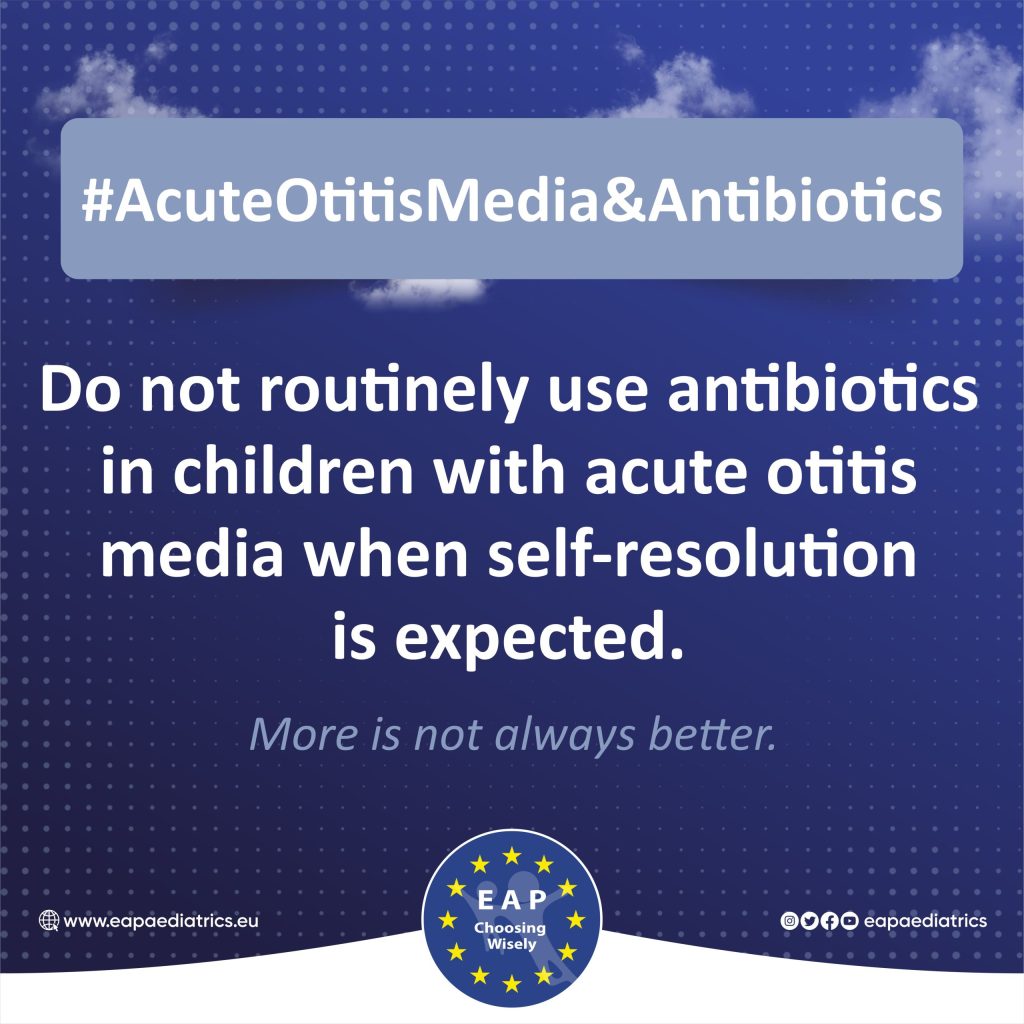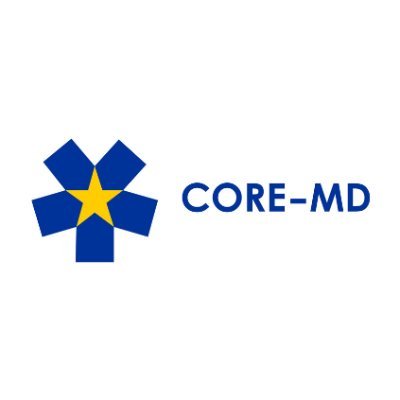
Acute otitis media (AOM) is a very common and usually self-limiting infection in children. Watchful waiting strategy should be discussed with parents and follow-up after 48-72 hours is arranged, if symptoms persist.
What is known about prescribing antibiotics:
- Inappropriate use of antibiotics lead to adverse effects such as allergic reactions and gastrointestinal symptoms and enhance the risk of antimicrobial resistance.
- It is recommended to prescribe antibiotics in accordance with national guidelines.
What is known about prescribing antibiotics:
- Acute otitis media is a self-resolving illness in the vast majority of cases. Antibiotics are not efficient in viral infections.
- Inappropriate use of antibiotics can lead to serious adverse effects and promotes antimicrobial resistance.
- Give your child painkillers to make him/her more comfortable. Antibiotics do not relieve pain in the first 24 hours and have only a small effect on pain after that.
- Vaccinate against S.pneumoniae.
What is known about prescribing antibiotics:
References:
- Del Castillo-Aguas G, et al. Acute otitis media management: A survey of European primary care pediatricians. Global Pediatrics 2023; 4 100057. https://doi.org/10.1016/j.gpeds.2023.100057
- Le Saux N, et al. Canadian Paediatric Society, Infectious Diseases and Immunization Committee. Management of acute otitis media in children six months of age and older. Paediatr Child Health. 2016; 21(1):39-50. PMID: 26941560
- Lieberthal AS, et al. The diagnosis and management of acute otitis media. Pediatrics. 2013; 131(3):e964-999. PMID: 23439909 Marchisio P, et al. Italian panel for the management of acute otitis media in children. Updated guidelines for the management of acute otitis media in children by the
- NICE guidelines 2022. Otitis media (acute): antimicrobial prescribing. https://www.nice.org.uk/guidance/ng91
- Suzuki HG, et al. Clinical practice guidelines for acute otitis media in children: a systematic review and appraisal of European national guidelines. BMJ Open. 2020; 10(5):e035343. PMID: 32371515
- Thomas JP, et al. Acute otitis media–a structured approach. Dtsch Arztebl Int. 2014; 28;111(9):151-9; PMID: 24661591
- Venekamp RP, et al. Antibiotics for acute otitis media in children. Cochrane Database of Systematic Reviews 2023, Issue 11. Art. No.: CD000219. PMID: 37965923

